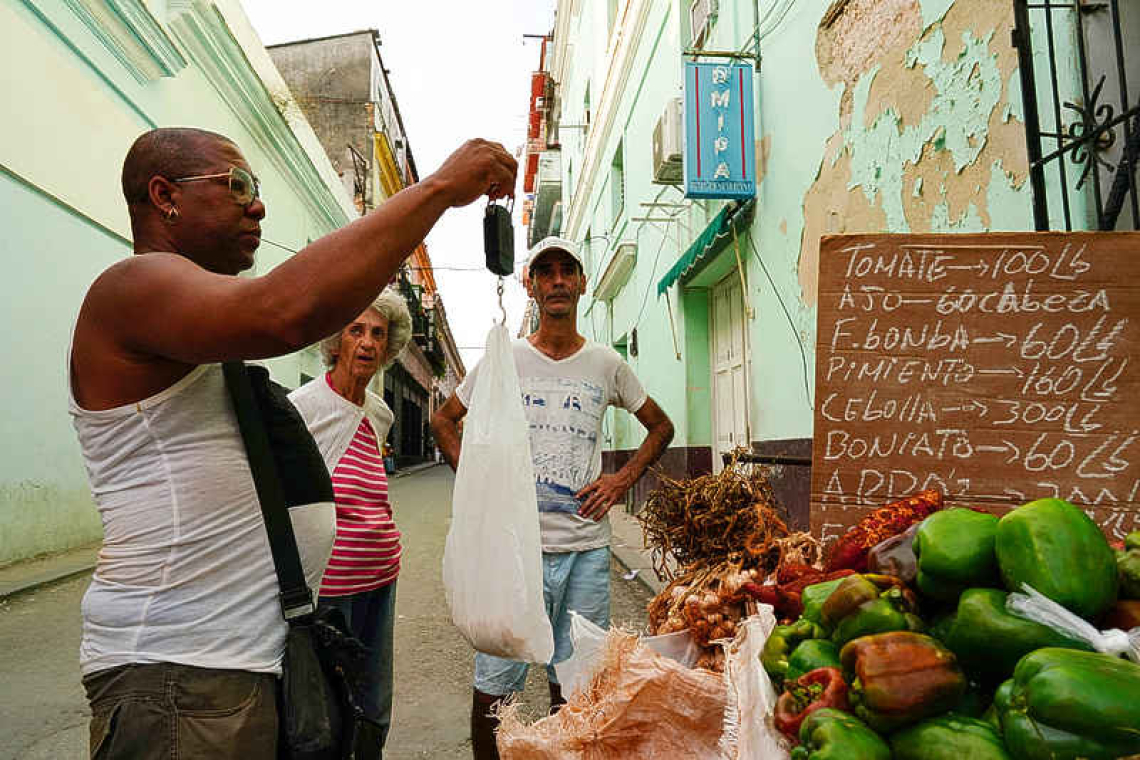A street seller checks the weight of vegetables as clients look on in downtown Havana, Cuba, March 12, 2024. Photo credit Reuters/Alexandre Meneghini.
HAVANA, Cuba--The Cuban government has promised to take decisive action this month to halt a slide in the peso that has wiped out savings and left Cubans struggling to afford basic goods, but economists Reuters spoke to were sceptical of a quick fix.
The black market peso has slid 20% far this year against the dollar, and has less than 10% of the purchasing power it had in 2019.
Last month, Deputy Economy Minister Mildrey Granadillo de la Torre told a cabinet meeting that measures to tackle the weakening peso were planned for March, including an "adjustment of the exchange rate," according to state media.
Prime Minister Manuel Marrero said in December a major monetary reform would take place this year. Neither official gave further details.
But five Cuban economists Reuters spoke with said that changing course would be difficult.
Cuba has three effective exchange rates. The government has a fixed rate of 24 pesos to the dollar, plus a "discretionary" fixed rate of 120 pesos, used, for example, for services for tourists and gasoline. And then there is an informal one, which was trading at around 320 pesos to the dollar on Tuesday, according to a tracker provided by independent news outlet “El Toque”.
Marrero has said taking back control of the monetary system is part of a plan to set the stage for recovery from a crisis that has left gross domestic product 10% below its 2019 level.
The government often lambasts the informal rate as illegal, speculative and part of a US effort to cripple the state-dominated economy.
"This practice that from another country someone using a computer sets the exchange rate must go," Marrero said in December.
But the informal rate is the one that best reflects the true value of the peso, the economists said.
"In reality the informal exchange rate is a reflection of the imbalances in the economy, and it is not the main cause of the problems," former central bank economist Pavel Vidal said in an interview.
He said the peso's plummet this year was on the back of a record fiscal deficit, falling production and the absence of a clear stabilisation programme and reforms he said were needed.
"The exchange rate will continue to depreciate between 5% and 9% each month," predicted Vidal, who teaches in Colombia and is the most widely read critic of Cuban monetary policy.
For Cubans who have lived through two previous adjustments that did nothing to dampen inflation, demand for dollars is unlikely to decline as imported goods’ prices rise and people seek to leave the island for a safe haven for their savings.
"I don't have much hope," said Rafael Oliva, a 28-year-old who works in the private sector.
"As long as the demand for dollars remains high ... the exchange rate will never go down." ~ Reuters







